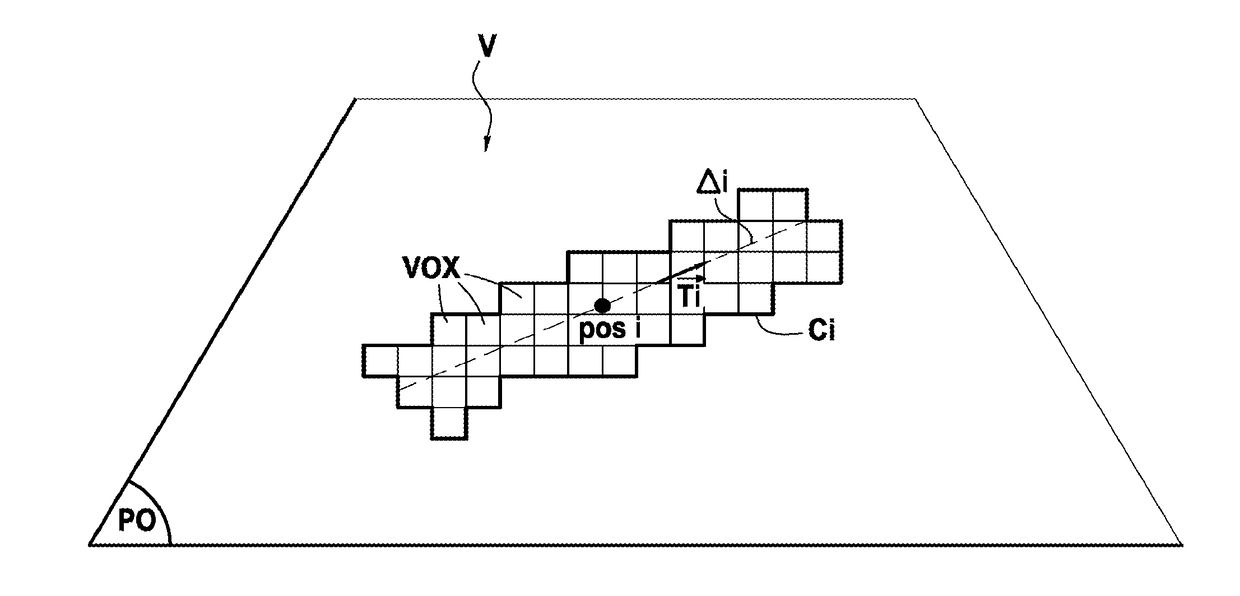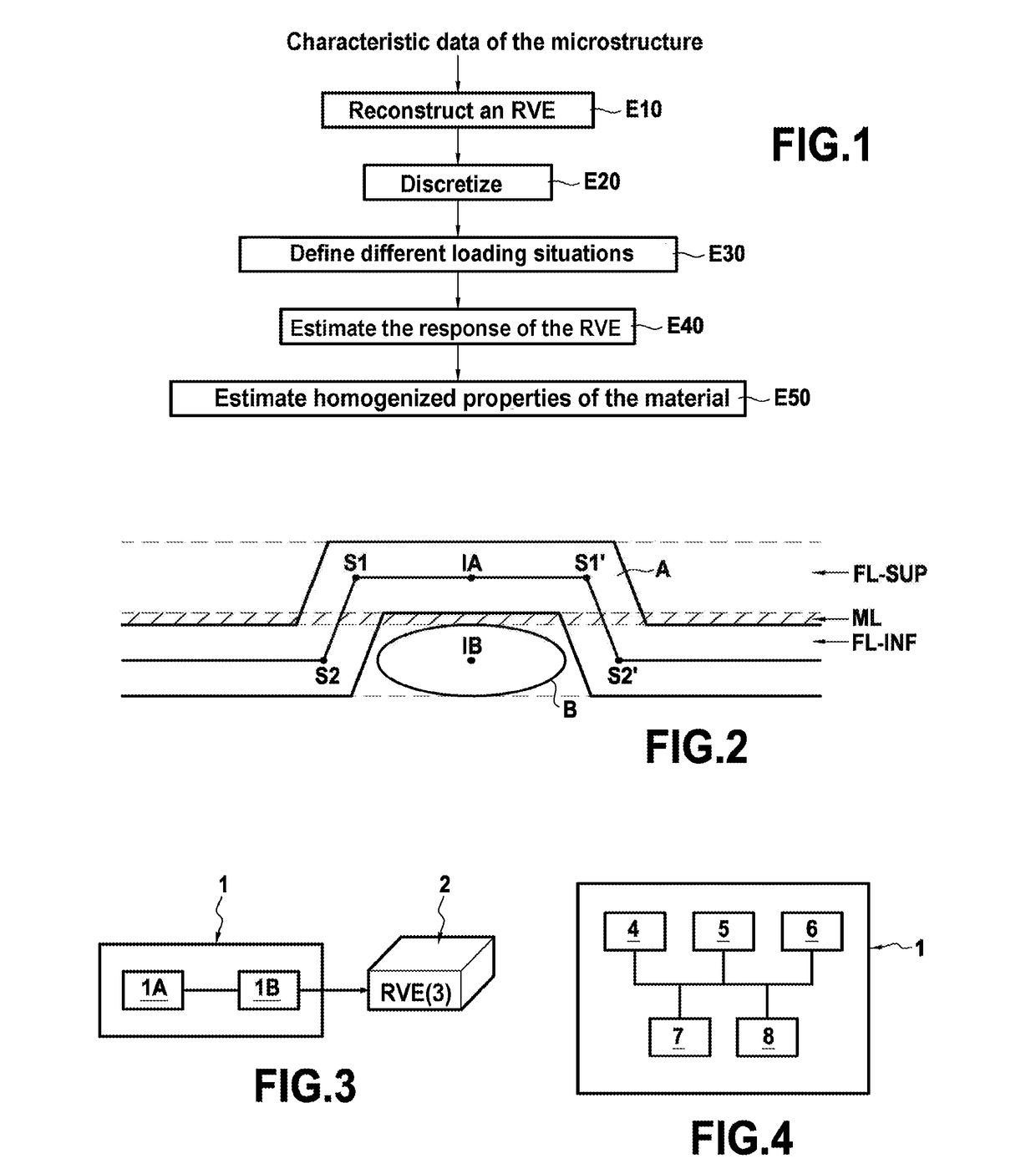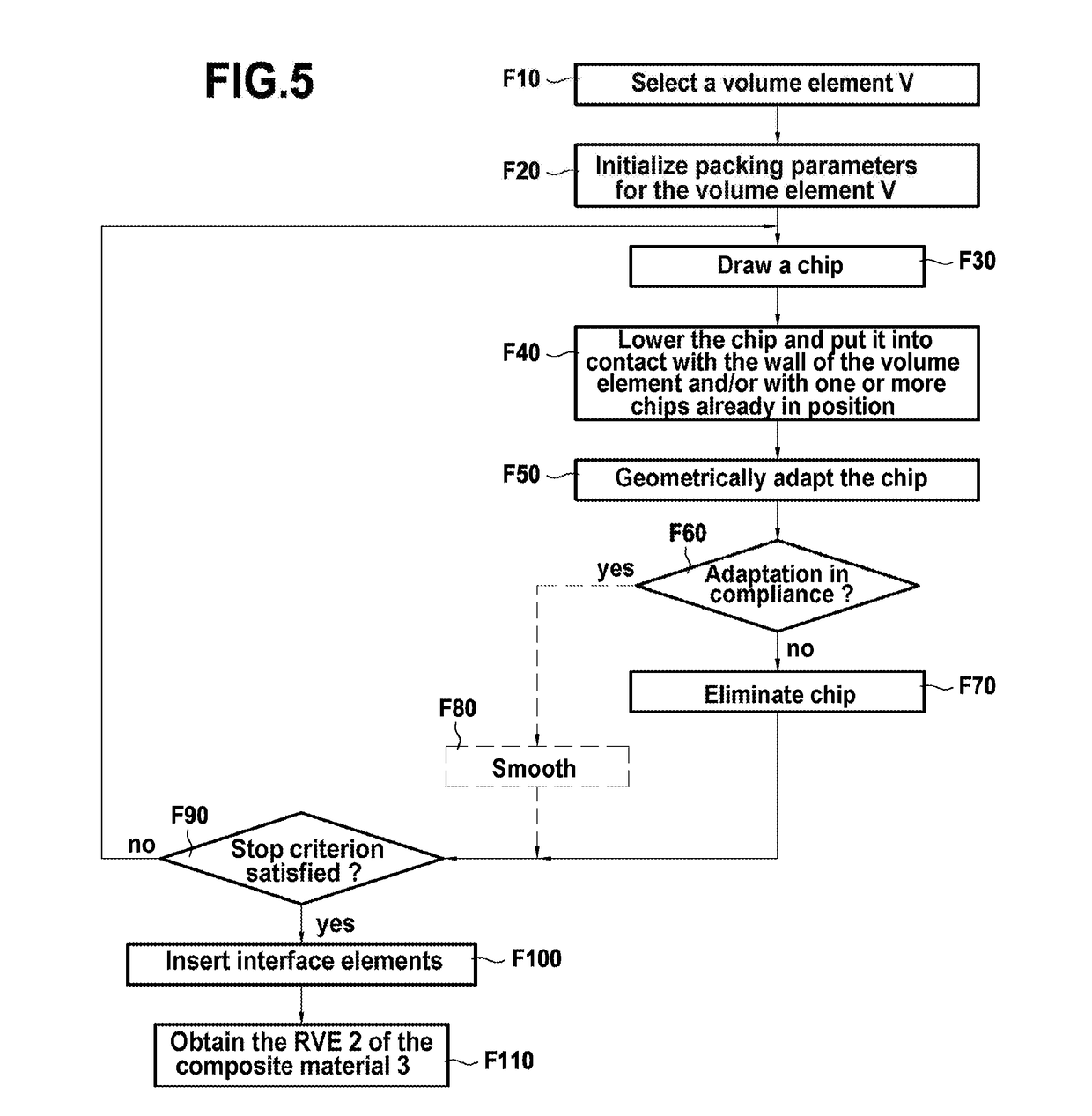Method and device for digital reconstruction of an elementary volume representing a microstructure of composite material
a composite material and microstructure technology, applied in the field of digital reconstruction of representative volume elements, can solve the problems of high fiber volume packing ratio, and low fiber volume packing ratio
- Summary
- Abstract
- Description
- Claims
- Application Information
AI Technical Summary
Benefits of technology
Problems solved by technology
Method used
Image
Examples
Embodiment Construction
[0082]FIG. 3 shows, in its environment, a device 1 for reconstructing a representative volume element (RVE) 2 of microstructure of a composite material in accordance with a particular embodiment of the invention. In known manner, a representative volume element of a composite material is a geometrical entity that is statistically representative of the microstructure of the composite material, i.e. that models the microstructure.
[0083]In the presently-described example, consideration is given to a composite material 3 of DFC type, in other words having discontinuous long fibers that is made from fiber chips that are randomly tangled and preimpregnated with a thermosetting resin (matrix). By way of example, the chips are chips of glass fiber or of carbon fiber impregnated with a carbon resin, and they are substantially in the shape of rectangular parallelepipeds.
[0084]Nevertheless, the invention is naturally applicable to other composite materials made up of fiber elements preimpregna...
PUM
 Login to View More
Login to View More Abstract
Description
Claims
Application Information
 Login to View More
Login to View More - R&D
- Intellectual Property
- Life Sciences
- Materials
- Tech Scout
- Unparalleled Data Quality
- Higher Quality Content
- 60% Fewer Hallucinations
Browse by: Latest US Patents, China's latest patents, Technical Efficacy Thesaurus, Application Domain, Technology Topic, Popular Technical Reports.
© 2025 PatSnap. All rights reserved.Legal|Privacy policy|Modern Slavery Act Transparency Statement|Sitemap|About US| Contact US: help@patsnap.com



